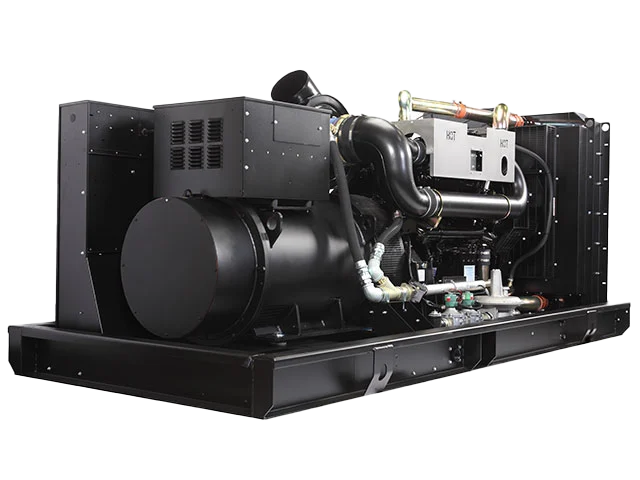The Role of Overvoltage Protection in Generator Operation
On this page
Generator overvoltage protection is a critical aspect of power systems, particularly when turbine generators experience load rejection operations. This protection mechanism aims to prevent insulation damage caused by overvoltage, ensuring the safe operation and long-term stability of generators. As electricity demand increases, the operating conditions for generator units become more complex, making the understanding and application of overvoltage protection particularly important.
Overvoltage can severely impact the normal operation of a generator and may even lead to equipment damage. Therefore, a thorough understanding of the causes of overvoltage and its effects is crucial for the safe operation of generators. This section analyzes the main causes of overvoltage phenomena and their potential impacts.
During load rejection in generators, the responsiveness of the speed control system is vital for the operation of the generator. If the system responds slowly, the speed may rise rapidly, leading to overvoltage. In such cases, even if the voltage-to-frequency (V/Hz) limit is not exceeded, the sustained voltage magnitude may still surpass safe levels.
In particular, in hydropower turbines, the speed can reach 200% of the rated value during load rejection. If the voltage regulator is not activated promptly, the voltage will increase proportionally, potentially causing equipment damage.
Overvoltage can lead not only to the aging and damage of insulation materials but also to permanent equipment failures. Electrical devices experiencing overvoltage face significant safety hazards, potentially resulting in the overall failure of the power system.

To effectively prevent overvoltage during load rejection or other abnormal conditions, the design and implementation of an overvoltage protection system are essential. This system must meet technical requirements and possess high reliability and responsiveness to cope with complex operating environments.
The generator overvoltage protection system typically comprises an overvoltage relay with frequency compensation. This relay includes an instantaneous action unit and a time-delay unit with inverse time characteristics. The setting range for the instantaneous action unit is generally 130-150% of the rated voltage, while the time-delay unit is set to 110% of the rated voltage.
Instantaneous Protection: In the event of a rapid voltage increase, the instantaneous action unit can quickly disconnect the excitation power supply, effectively preventing damage to the generator caused by overvoltage.
Time-Delay Protection: Through the time-delay unit, the protection system can safeguard against chronic overvoltage phenomena, ensuring that the excitation power supply is not reconnected until the voltage has returned to a normal range.
Different types of generators have unique operating principles, structures, and application scenarios, leading to varying demands for overvoltage protection. The design and implementation of overvoltage protection measures must be specifically analyzed for turbine and hydroelectric generators to ensure the safety and stability of the equipment.
The speed control systems of turbine generators typically exhibit high responsiveness, effectively addressing the impacts of instantaneous load changes. Consequently, overvoltage protection for turbine generators primarily relies on fast disconnection systems to prevent insulation damage.
Hydropower generators, due to their larger system inertia, exhibit slower braking processes. When they suddenly lose load, the speed may rise sharply, making the installation of overvoltage protection on hydropower generators particularly necessary. This protection can prevent voltages from reaching 1.8 to 2 times the rated value, ensuring the safety of the equipment.
Overvoltage phenomena are not solely caused by load rejection; they are also influenced by various factors. Understanding these factors is crucial for developing effective protection measures, helping to ensure the safety and stability of generators under various operating conditions.
The excitation system is a core component of generator operation, and its proper functioning directly affects the stability of the motor. When there is a mismatch between the excitation current and the control current of the excitation current controller, the excitation current may increase abnormally. This state of excessive excitation output can lead to a significant voltage increase on the generator rotor, resulting in overvoltage and threatening the safety of the rotor windings.
To prevent this phenomenon, it is recommended to install overvoltage protection devices in the excitation system to ensure timely monitoring and adjustment of the excitation current.
Line overvoltage is another critical influencing factor during generator operation. When overvoltage occurs on the line and is not addressed promptly, it can be transmitted through transformers to the rotor windings of the generator, potentially causing internal voltages to exceed safe levels.
Timely management and control of line overvoltage can effectively reduce its impact on the generator, preventing damage to the rotor windings and ensuring the normal operation of the generator.
Rapid load fluctuations can also trigger overvoltage phenomena. Under certain operating conditions, sudden load changes, especially during peak periods of load drops, can lead to abnormal voltage increases at the generator output. This situation requires enhanced load forecasting and adjustment strategies to improve the system's responsiveness and mitigate overvoltage risks.
In addition to internal factors, external faults (such as short circuits) can affect the voltage stability of the generator. When a short circuit occurs, it may cause instantaneous voltage spikes, threatening the insulation of the generator. Therefore, the system design should include fault protection devices to ensure rapid disconnection of power in the event of external faults.
The generator overvoltage protection system plays an indispensable role in modern power systems. Through reasonable design and effective implementation, the risks of overvoltage caused by load rejection or excitation system failures can be significantly reduced, thus protecting the generator's insulation and prolonging equipment lifespan. To ensure the safe and efficient operation of generator units, it is recommended to thoroughly consider overvoltage protection measures during the design phase and to regularly maintain and test the protection systems to adapt to the ever-changing power demands and operating conditions. Continuous optimization and upgrading of the overvoltage protection system can provide a solid guarantee for the stability and reliability of the power system.
